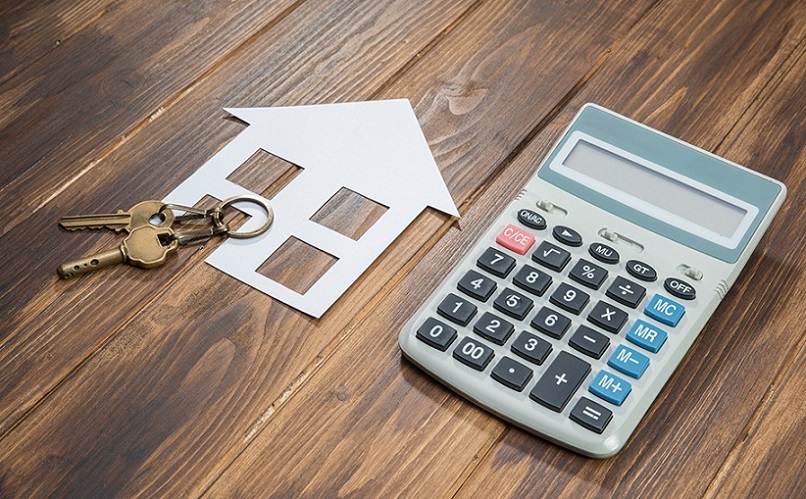If you’re like most Americans, you have the idea that buying a house is a good investment, which it can most definitely be, if you play your cards right.
What is a Down Payment with Regard to Buying a House?
With regards to buying a house, a down payment is the money that you put down when you are getting a loan for your dream home. It is the money you put down upfront, and that you have probably been spending the last couple of years saving up for. Along with the loan itself, it constitutes the money that you will be paying for the house.
It is one of the determining factors that will affect how much house you are able to afford. Some of the other factors include your credit history, credit score, the cumulative amount of debt you have, as well as your annual income.

Assuming you are want to loan the same amount of money, if you are able to put down a larger down payment, this will equate to you paying smaller monthly payments on the home. This is not only because you are borrowing less money, but it is also because the lending institution might be willing to borrow you the money at a lower rate.
Besides the down payment, you will really want to make sure you have a good credit score, 700 or higher is generally considered good.
The type of loan you choose for your home will also help determine the amount of down payment that you need to be putting down. The average first time home buyer in fact only puts down 6% as a down payment.
Does it make sense to use a low down payment mortgage?
First of all, start out by making sure that you read our guide on getting a mortgage, so that you familiarize yourself with the process, which in turn will help you when you get to that point.
While it might be tempting not to put down a large down payment, there are reasons to consider putting down a larger percentage of the sale when buying. In fact, Wealth Pilgrim wrote an article with six different reasons to put down more money:
- By putting down more money, you protect yourself against price decreases in the market.
We all want our homes to increase in value, but if reality is that you can no longer afford to stay in your home, and it has decreased so much in value that you owe more on it than it’s worth, you are no longer in a position to sell it. You really don’t want to be in a situation with negative equity in your house.
- Avoid needing to pay mortgage insurance.
A private mortgage insurance, also known as PMI, is an insurance will lower the risk to the company lending, but it can also constitute a pretty big part of your monthly payments on your mortgage. The PMI fees generally vary from 0.3% to 1.5% per year of the full loan. There are luckily things you can do to avoid having to pay the PMI, which includes increasing the down payment you’re paying, “buying out” your PMI which means you will need to pay a little bit higher interest rate.
- As mentioned, a larger down payment means you will end up borrowing less.
Which in turn means you will be paying less on your mortgage payment.
- It lets you get better terms on your mortgage, as well as a greater likelihood that the mortgage will be approved.
There are, however, also reason not to pay a larger down payment, which again is backed up by this article.
If you put all your savings down, you won’t necessarily have a reserve for if something goes bad and you all of the sudden need money for something else.
If you have other loans with high-interest, it’s a good idea to pay these off first. It will save you more money paying off high-interest loans rather than putting down a large down payment. It might also mean that your lender is able to not only lend you more money, but with better terms too.
If you are able to increase the value of your newly acquired home with the money you saved on your down payment by remodeling it, or otherwise doing home improvement projects, you might also be able to get out of having to pay the PMI, if you manage to get 20% equity in the house like that.
Here’s another article on getting out of PMI, since you don’t want to wait until your automatically stops charging you for PMI, as they are required to do once you get enough equity in the house.
Types of loans and their respective down payments

There are commonly two types of loans you need to know about. Either it’s a goverment-backed loan, that are generally either insured by the FHA (Federal Housing Administration) or insured by VA (Veteran’s Administration). These are generally referred to as non-conventional loans. As you can infer from this, if you are to fail on your payments, and the lender has a loss as a consequence, these two agencies will step in and cover whatever losses are incurred by the lender.
These initiative are made to make home ownership available to a larger percentage of the population.
Opposed to non-conventional loans, conventional ones are the ones that are not insured by a government organization. They include the following types of loans.
We will not cover each type, and should you decide that you want to read about all of them, we’ve conveniently included links that you can easily follow to obtain more information.
With these types of loans, the lender is assuming all the risk, which means that the requirements are more strict, and you will be forced to pay the PMI until you have 20% equity in the home.
Requirements for a conventional loan are generally good credit, a steady income, and a sizeable down payment of 20%. You can check out a larger comparison between conventional and FHA loans right here, but you will generally need 2 years of solid employment history to be eligible.
A 20% down payment in reality means that you will need to be able to put down $60k if you’re buying a $300k house.
FHA Loan
The FHA-backed loan requires you to only put down 3.5%, but does charge an upfront insurance premium. They also have low closing costs and are easy to get, and they only require a minimum credit score of 500. Remember that 700 or more is considered good, so this loan is easy to get. This type of loan will require an appraisal by an approved FHA-appraiser.
You can also get a loan for the repairs you intend on doing to the home, which is called a 203(K) loan.
VA Loan
As mentioned, they’re backed by the Veteran Administraion and are available to veterans and their spouses, and you can get them without even putting any money down, and these loans do not require PMI either. Here’s an extensive guide that will help you understand this specific type of loan and whether it is the right one for you. The guide also shows you that they in fact not only have the mentioned advantages, but they will additionally have competitive interest rates as well as be easy to qualify for.
Credit union financing
Credit union financing is another way that may make you eligible to get a loan with no down payment.
Credit unions are also known for their lower fees, and you might be able to get one of these loans even if you don’t have a great credit score. As they advertise, credit unions put people first and profit second, and you can easily find out how you are able to join one right here.
USDA
These types of loans are only available in certain areas, and while made available by the Rural Development department under the United States Department of Agriculture, many are surprised to find out that these are in fact not just available for farmland. To find out if your desired home purchase is eligible under this program, visit USDA’s website. Go here to check the availability in all the different states.
The downside to this program is that it sometimes runs out of money before the end of the fiscal year as a consequence of being so popular. There are exceptions, but it is mainly made for first-time home buyers, and there are certain income requirements, depending on the state that you live in.
If you are eligible, it’s a great option for buyers that do not have a lot of money for a down payment.
yourFirst Mortgage
This is a 3% down payment option made available by Wells Fargo. It’s even a fixed-rate mortgage, making it less risky for you as a home-buyer. It’s also especially geared towards first-time home buyers. There are also no area median income requirements that you need to live up to to be able to get it.
Affordable Loan Solution Mortgage
This is a product offered by Bank of America. If you are not able to put down a larger down payment, this may be an option for you to look into as well, as they also simply require down payments as low as 3% with competitive interest rates, and PMI is not required either. What you need to know is that there are maximum income limitations, and the loan amount you will be able to get also depends on your geographic location.
HomeReady Mortgage
A Fannie Mae product for families with low to moderate incomes. The required down payment on this loan is also just 3%, and if you have a credit score above 680, you may get favorable conditions. Once you reach 20% equity in the home, you’re also eligible to have the PMI dropped, lowering your monthly payments.
The co-borrower does not need to live in the property either, meaning parents can help their kids with this mortgage.
Conventional 97 Mortgage
The 97% LTV (loan-to-value) program allows families the option to put down just 3% of the purchase price of the property. There are a lot of lenders available with this program, and rates are competitive. It’s also a fixed rate loan.
Fixed rate
A fixed rate mortgage has a fixed interest rate over the life of the loan, meaning you won’t need to be afraid there’s going to be a rate increase that would otherwise make it more expensive to have the loan that you have.
This option is most commonly available in 15 or 30 year mortgages.
Besides being protected against suddenly increasing rates, it also makes it a lot easier to compare the different loan options against each other. On the other hand, you will need to refinance your mortgage if the rates fall, and you wish to take advantage of the lower rate, which may be a tedious process. With this type of loan, there’s also no lower introductory rate that you can take advantage of.
For those that decide to play it a bit safer, this is a great option that will very much protect you against the unknown, and if you don’t have a lot of available space left in your budget, this may be the better option to go with.
As it is basically an insurance against an interest rate increase, you can also expect it to be a little bit higher than the variable rate.
You can find the historic US 30 Year Mortgage Rate right here.
Adjustable rate

Contrary to a fixed rate, when you get an adjustable rate mortgage, as the name suggests, you will more easily be benefiting when the rate decreases, and your payments will also increase if the rate increases.
The Consumer Financial Protection Bureau encourages you not to assume you’ll be able to sell or refinance the loan before interest rates change, and if you have this type of loan, it’s important that your budget has some room in it in case rates change, or you might all of a sudden be surprised to find out that you can no longer afford the home you bought.
If you currently need lower payments, but you expect a promotion in the near future, you may consider a short-term fixed rate mortgage that becomes adjustable after 3/5/7 years.
Since the initial payments will be smaller with an adjustable rate mortgage, you’ll be able to afford more house using it, and you may be tempted to buy more house than you could afford under a rate increase.
If you are able to put the savings in other investments that yield a higher interest rate somewhere else, the ARM may also be tempting. Needless to say, it is important to point out the inherent risk from choosing this option.
With this option, you are at the mercy of the economy. If the economy is doing well, interest rates tend to rise to counteract possible inflation, while the opposite will happen when there’s a recession.
With this option, you are also more at the mercy of the lending institution, and it will be a lot less transparent for you to realize the best offer among the different lenders you’ve been talking to.
If you have a negative amortization loan, that is something you need to be careful with. The payments on these loans are so low that you in fact don’t even cover the interest, and in fact end up owing more money on the loan over time.
At the end of the day, the loan structure that you end up choosing, make sure that you fully understand all the implications of it.
Earnest money vs down payment

What you need to know about earnest money is that it’s a sign of good-faith, since it’s an amount of money that a buyer will put into escrow, once they find the house that they desire buying.
If for some reason the buyer does not live up to the contract, this money will go to the seller. It is not nearly as high as a down payment, since it will often constitute 1-2% of the price of the house that is being bought, while, as you’ve seen, down payments often range from 3-20%, depending on the type of mortgage that you decide to go with.
There are a lot of mistakes you can make when it comes to earning deposits. You need to be aware of the contractual agreements that you go into with an earnest money deposit, and even if you break up with your significant other, you need to be aware that you might very well end up losing the money as a consequence. The contract dictates the conditions for you getting your money back. Whenever you buy a house, you can never prepare too much.
Generally, the earnest money deposit depends on the price of the house, and it’s a thing that you can negotiate with the seller.
Calculating the Down Payment

Calculating the down payment is not difficult. If the down payment is 3.5% on a $250k house, that amounts to $8.75k. If on the other hand you have an expectation that you want to pay 20% down payment, the number would rather be $50k. As you can imagine, saving up the difference between the two percentages would take some time, and the lower down payment programs are then naturally more suited for those that do not want to wait with buying a house.
Now you know what the down payment is with regards to buying a house, and it’s just about time for you to find that house you’ve always been dreaming of.